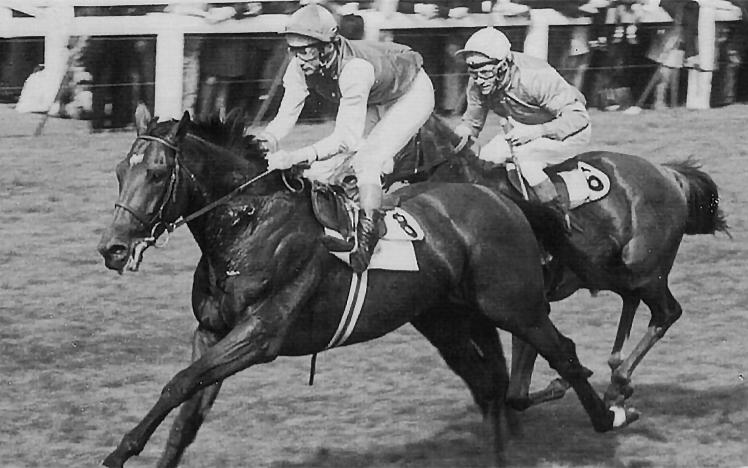With the longest roll of honour in racing, The St Leger is steeped in significance and has featured some of the most notable horses in British history. As the world of racing begins to wonder who will return to the winner’s enclosure this year, let us not forget the horses whose successes have galvanised the status of the race since its inception in 1776.
The story begins with Allabaculia, a bay mare owned by Lord Rockingham. She was of unknown breeding and, as was common at the time, remained nameless throughout her whole career. After her win in the 1776 St Leger stakes she was mistakenly listed as a colt and only when 19th century racing publications were discovered was it was revealed that the filly was known as Allabaculia. The St Leger began to rise to prominence in 1800 when a horse called Champion headed to Doncaster having won the Epsom Derby. Yorkshire born and bred, Champion hailed from Tadcaster. After winning the Derby on his first ever run, he repeated this success in the St Leger having started as 2/1 favourite. Amusingly, Champion was by a sire named Potoooooooo. The horse was meant to be named ‘potato’, but when the stable lad was instructed to write the name on the stable door he mistakenly heard the name as Pot & 8 o’s – hence the bizarre spelling! The owner of the horse, The 4th Earl of Abington, was tickled by the misunderstanding and so the name stuck. It would be 48 years before Champions Derby-Leger double would be repeated.
In 1848 a colt named Surplice, owned by Lord Clifden, won the Epsom Derby by a neck. Heading next to Doncaster, a false start didn’t affect him and his Derby formed was confirmed by another win in the St Leger, again by just a neck. Just two days later Surplice ran again and this time his reputation was so formidable that not a single opponent turned up to contest him and he won the race by default, just having to walk over the winning line to collect his prize. Another dominant winner was the 1896 champion, a colt named Persimmon. Heading to the St Leger start he was watched anxiously watched by his owner, the then Prince of Wales. Having won the Derby that June, Persimmon started as 2/11 favourite in a field of six runners, four of whom were available to back at prices of 66/1 or more. Perhaps unsurprisingly, the colt found victory easy and continued on a winning streak that would see him take first prize in seven of his nine starts. Persimmon went on to become the most influential sire of his time. One of his offspring, a filly named Sceptre, continued his legacy by not only winning the St Leger, but by winning both the 1902 1,000 and 2,000 Guineas within two days of each other. Her next stop was the Derby, where a bruised foot meant she could only come home in fourth; she avenged this defeat however by winning the Oaks just two days later. Her season only improved when she took the 1902 St Leger, galvanising her status as one of the most outstanding mares ever to take to the turf. Her record as the outright winner of four classics still remains unchallenged. Another brilliant filly to win the St Leger was Pretty Polly, bred in Ireland in 1901. In a remarkable career that saw her win 22 of her 24 starts, Pretty Polly won every race of significance for fillies and outdid all of the colts to win the St Leger on Town Moor in 1904.
In 1933 another legend of racing was created, Hyperion. Sired by Gainsborough, himself a Triple Crown winner who took the St Leger in 1918, Hyperion was owned by the 17th Earl of Derby. Fittingly he followed Prince of Wales and Chester Vase victories by a win in the Derby itself. St Leger success then rounded off an outstanding three year old season in which he was unbeaten, and his success on the turf was matched when at stud. The leading sire in 1940, 1941, 1942, 1945, 1946 & 1954, Hyperion represents a key part of the history of the thoroughbred and even produced a colt to emulate his St Leger success – Sun Chariot in 1942.
The English Triple Crown has proved notoriously difficult to win. Several horses have won the first two legs of the series, The 2,000 Guineas at Newmarket and the Derby at Epsom, but found the St Leger a step too far. The most recent success was that of Nijinsky in 1970. Bred in Canada, Nijinsky was trained at Ballydoyle in Ireland by the late Vincent O’Brien. Beaten only twice from 13 runs, Nijinsky not only won the English Triple Crown, but managed to intersperse these wins with victories in both the Irish St Leger and the King George VI and Queen Elizabeth Stakes. Nijinsky contracted ringworm prior to his English St Leger win, and was nursed back to health on a diet of raw eggs and Irish stout. The treatment must have been effective as the colt won comfortably, securing the last leg in the Triple Crown title that he still holds.
To be continued…








































